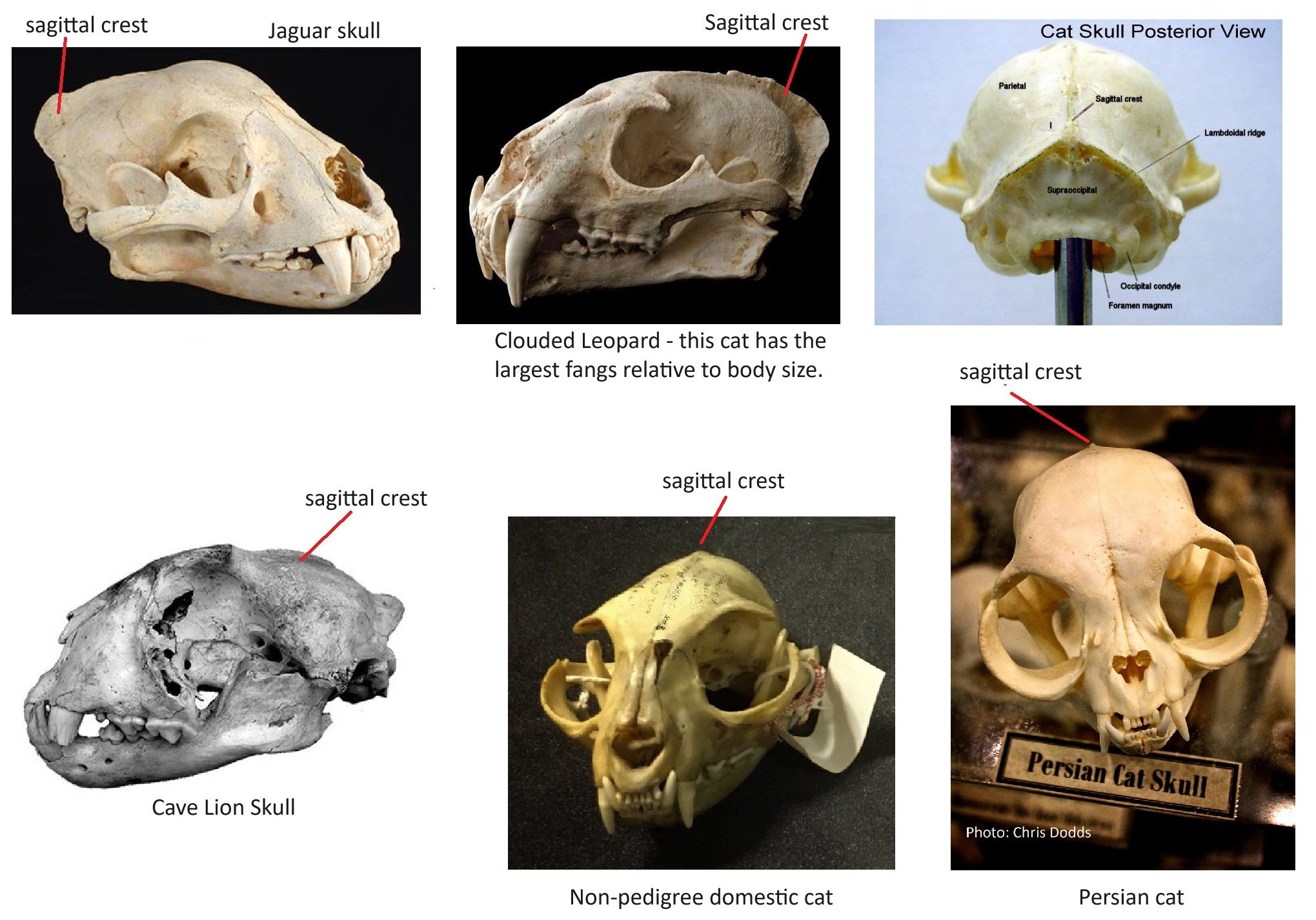
SAGITTAL CRESTS IN CATS
The sagittal crest is a bony ridge running along the midline of the skull. It is a point of attachment for the jaw-closing muscle (temporalis muscle), so the more the jaw muscles are used and the stronger they are, the more prominent the sagittal crest is. In carnivores and omnivores, strong jaw muscles are needed for cracking bones to get at the marrow. In some herbivores, strong jaw muscles are required to chew tough vegetable matter.
Skull shape also plays a role. Modern humans have small, rather weak jaws and domed skulls. We lack a sagittal crest although some individuals have a thickened area of bone running from front to back along the midline of the skull. This is called a sagittal keel and the chewing muscles are not attached to it.

Cats have domed skulls with wide zygomatic arches (cheek bones) and relatively short faces compared to dogs. This anatomy reflects which senses are most used in hunting. Cats and dogs both hunt prey, but dogs rely mainly on smell, while cats rely on sight and sound. The catís sagittal crest can be felt when stroking the top of its head.
Development of the sagittal crest seems to be connected to the development of the temporalis muscle. Muscles grow stronger from use and pull harder on the point of attachment on bones. The harder they pull, the more the body strengthens those bones. A sagittal crest usually develops during the juvenile stage, in tandem with the growth of the jaw muscle, as the skull grows to its adult size and the parietal bones fuse along the sagittal suture. The degree to which the sagittal crest is influenced by "mechanical loading" versus skull size and shape is poorly understood.
While the size of the crest is influenced by strain put on it by the muscles, the size of the skull relative to body size is important. In dogs, a small dog doesnít develop a sagittal crest because its relatively large skull provides a sufficient area for the jaw muscles to attach and they donít reach the top of the skull; a small dog doesnít need to eat huge amounts (less strain on jaw muscles). In a large dog, with its relatively small skull and it need for larger amounts of food (more strain on jaw muscles), the crest is needed to provide sufficient area for the attachment of jaw muscles. It's only when the muscles from the two sides of the head meet on top of the skull that the sagittal crest develops in response.

So, a strong sagittal crest provides an anchor for powerful jaw muscles and is linked to the relative size of the skull and body (because larger animals need more food). Strong jaw-closing muscles increases the bite force of the canine teeth (fangs). The jaguar Ė which kills mammalian prey by biting into the skull and piercing the brain, and which will hunt crocodiles and river turtles - has the strongest bite force in the cat family and a pronounced sagittal crest.
All wild cat species have a sagittal crest while domestic cats have greatly diminished sagittal crests because their lifestyle and softer diet no longer require them to have strong jaw muscles. It is a case of "use it or lose it." Human selection for certain conformation, e.g. the very rounded skull of the modern Persian, affects the development of skull features including sagittal crests.